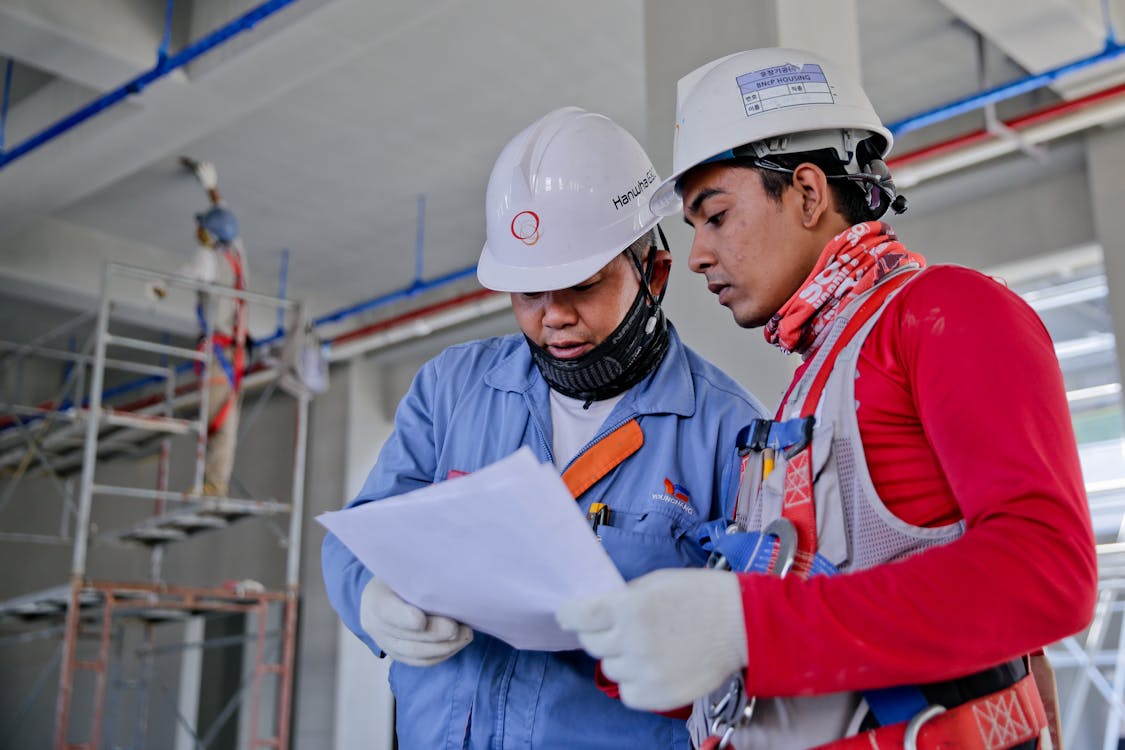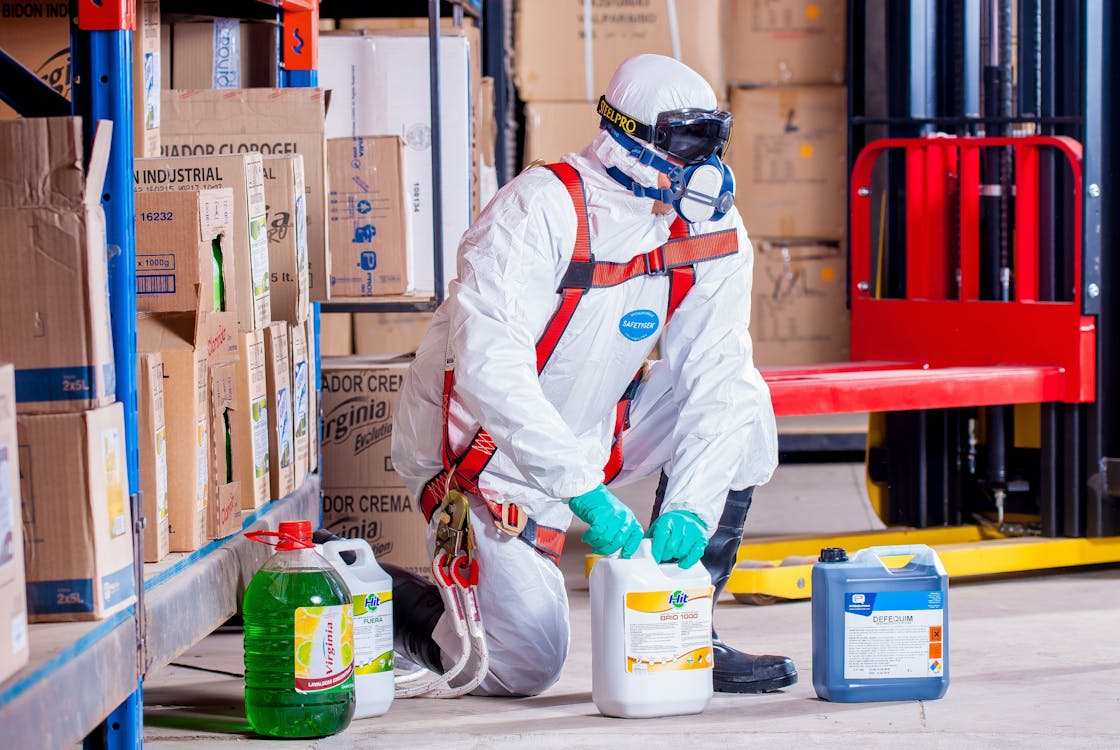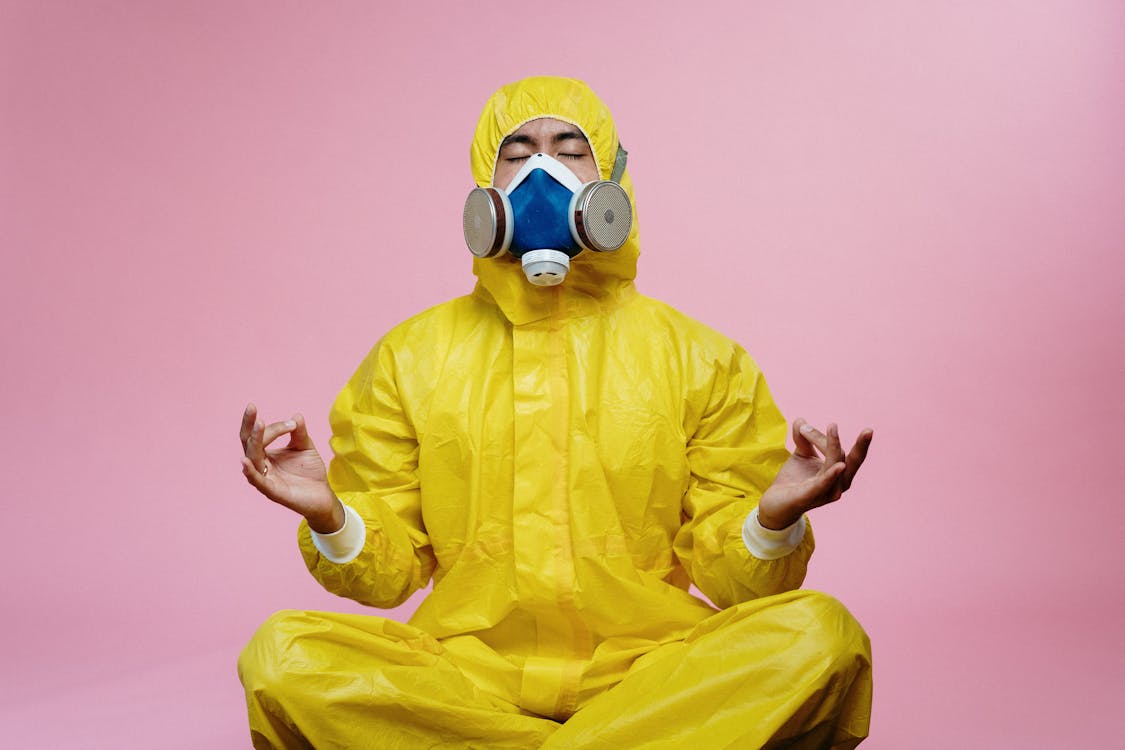Safety Audit Benefits are systematic reviews of the safety performance of an organization or facility, aimed at identifying potential hazards and risks and ensuring compliance with safety regulations and industry standards. Conducting safety audits can bring many benefits to industries, including
- Improving safety culture: Regular safety audits can help create a safety-conscious workplace culture by encouraging employees to prioritize safety and identify potential hazards.
- Identifying hazards: Safety audits can help identify safety hazards and risks that may not be immediately apparent, allowing organizations to take corrective actions before incidents occur.
- Compliance with regulations: Safety audits can ensure that an organization is in compliance with safety regulations and industry standards, reducing the risk of regulatory fines or legal liability.
- Reducing incidents and injuries: Safety audits can help prevent workplace incidents and injuries by identifying and mitigating potential safety hazards.
- Reducing costs: Safety audits can reduce the costs associated with workplace incidents, such as workers’ compensation claims, lost productivity, and property damage.
- Improving efficiency: Safety audits can help identify opportunities to streamline processes, reduce waste, and improve productivity, ultimately benefiting the organization’s bottom line.
Overall, safety audits are a critical component of an effective safety management system and can significantly benefit organizations in terms of safety, compliance, and financial performance.

Safety is the state of being protected from harm, danger, or injury. In an industrial context, safety is a critical concern for employees, customers, and the environment. A safety program is essential to ensure the safety and well-being of all individuals involved in industrial operations. Safety involves the identification and management of potential hazards, risks, and threats, with the goal of preventing incidents and injuries.
There are many aspects to safety in an industrial setting, including safety policies and procedures, safety training, hazard identification, and control, safety audits and inspections, emergency response planning, and personal protective equipment (PPE). In this essay, we will explore these different aspects of safety in more detail.
Safety Policies and Procedures
Safety policies and procedures are the foundation of any safety program. They provide guidelines for safe work practices, establish expectations for employees, and outline the responsibilities of management and staff. Safety policies and procedures should be regularly reviewed and updated to ensure they remain relevant and effective.
Examples of safety policies and procedures include:
- Safety rules and regulations
- Incident reporting and investigation procedures
- (LOTO) Lockout/ TagOut procedures
- Hazard communication programs
- Personal protective equipment requirements
- Emergency response procedures
Safety Training
Safety training is critical to ensure that employees are knowledgeable and competent in safe work practices. Training should be provided for all employees, including new hires, and should be ongoing to reinforce safe work practices and ensure compliance with safety policies and procedures.
Examples of safety training topics include:
- Hazard identification and control
- PPE selection and use
- Emergency response procedures
- Safe equipment operation
- Electrical safety
- Confined space entry
- Fall protection
- Chemical safety
Hazard Identification and Control
Hazard identification and control is the process of identifying potential hazards and implementing measures to control or eliminate them. Hazards can include physical, chemical, biological, and ergonomic factors that can cause harm or injury.
Examples of hazard identification and control measures include:
- Regular safety audits and inspections
- Job hazard analysis
- Implementation of engineering controls, such as machine guards and ventilation systems
- Use of administrative controls, such as safety policies and procedures, training, and signage
- Use of PPE, such as safety glasses, respirators, and gloves
Safety Audits and Inspections
Safety audits and inspections are systematic reviews of safety performance to identify potential hazards and risks and ensure compliance with safety regulations and industry standards. Safety audits can be conducted internally or by a third-party consultant and can be comprehensive or focused on specific areas of concern.
Examples of safety audit and inspection topics include:
- Electrical safety
- Confined space entry
- Hazardous materials storage and handling
- Machine Guarding
- Fire safety
- Emergency Preparedness
Emergency Response Planning
Emergency response planning is the process of preparing for and responding to emergencies, such as fires, explosions, natural disasters, and hazardous material releases. An emergency response plan should include procedures for notifying employees, evacuating the facility, and coordinating with emergency responders.
Examples of emergency response planning activities include:
- Development of an emergency response plan
- Training of employees on emergency response procedures
- Conducting regular emergency drills
- Maintenance of emergency equipment, such as fire extinguishers and first aid kits
Personal Protective Equipment (PPE)
PPE is equipment worn by employees to protect them from potential hazards in the workplace. PPE can include safety glasses, hard hats, gloves, respirators, and earplugs. The selection and use of PPE should be based on a hazard assessment and should be included in safety policies and procedures.
Examples of PPE include:
- Eye protection, such as safety glasses and goggles
- Hearing protection, such as earplugs and earmuffs
- Respiratory protection, such as respirators
- Hand protection, such

Risk Assessment
Risk assessment is the process of identifying potential hazards and assessing the likelihood and severity of harm that could result from those hazards. Risk assessment is essential for effective hazard identification and control.
Examples of risk assessment methods include:
- HAZOP (Hazard and Operability) studies
- Fault Tree Analysis
- Job Hazard Analysis
- Safety Data Sheets (SDS) for hazardous chemicals
Safety Culture
Safety culture refers to the attitudes, beliefs, and values that shape an organization’s approach to safety. A strong safety culture is essential for creating a safe work environment, and it is built on leadership commitment, employee involvement, and open communication.
Examples of strategies for fostering a strong safety culture include:
- Providing safety training for all employees, including management
- Encouraging employee involvement in safety programs and initiatives
- Regularly communicating safety messages and reinforcing safe work practices
- Celebrating safety successes and recognizing employees who prioritize safety
Behavior-Based Safety
Behavior-based safety is a safety program that focuses on changing employee behavior to improve safety performance. Behavior-based safety programs typically involve observation and feedback on safe work practices, with the goal of reinforcing safe behaviors and correcting unsafe behaviors.
Examples of behavior-based safety strategies include:
- Conducting safety observations and providing feedback to employees
- Providing incentives for safe behavior and participation in safety programs
- Offering safety coaching and mentoring for employees who need additional support
- Using safety metrics and data to track safety performance and identify areas for improvement
Environmental Safety
Environmental safety is the protection of the environment from potential hazards and risks, including pollution, waste, and contamination. Environmental safety is critical to protect the health and well-being of the community and ensure compliance with environmental regulations.
Examples of environmental safety practices include:
- Hazardous waste management and disposal
- Pollution prevention and control
- Water and air quality monitoring
- Sustainability initiatives, such as energy conservation and waste reduction

Personal Protective Equipment (PPE)
Personal protective equipment (PPE) is equipment worn by workers to minimize exposure to hazards that can cause serious injury or illness. Examples of PPE include gloves, safety glasses, respirators, hard hats, and hearing protection. PPE should be selected based on the specific hazards present in the workplace, and workers should be trained on the proper use and care of PPE.
Emergency Response Planning
Emergency response planning is the process of developing a plan to respond to emergencies, such as fires, chemical spills, or natural disasters. Emergency response plans should include procedures for notifying emergency services, evacuating the facility, providing first aid, and containing and cleaning up spills. Regular drills and training can help ensure that employees are prepared to respond quickly and effectively in an emergency situation.
Safety Inspections and Audits
Safety inspections and audits are important tools for identifying hazards and ensuring compliance with safety regulations and best practices. Inspections may be conducted by internal safety personnel or by external regulatory agencies. Audits may be conducted by external auditors or by internal auditors who are independent of the areas being audited. The goal of inspections and audits is to identify potential hazards and opportunities for improvement and to develop plans to address those issues.
Incident Investigation
Incident investigation is the process of determining the root cause of accidents or incidents in the workplace. The goal of an incident investigation is to identify the factors that contributed to the incident and to develop strategies to prevent similar incidents from occurring in the future. Incident investigations should be conducted promptly and thoroughly, with a focus on identifying systemic issues and developing corrective actions.
Top of Form
Safety is the state of being protected from harm, danger, or injury. In an industrial context, safety is a critical concern for employees, customers, and the environment. A safety program is essential to ensure the safety and well-being of all individuals involved in industrial operations. Safety involves the identification and management of potential hazards, risks, and threats, with the goal of preventing incidents and injuries.
Safety Policies and Procedures
Safety policies and procedures are the foundation of any safety program. They provide guidelines for safe work practices, establish expectations for employees, and outline the responsibilities of management and staff. Safety policies and procedures should be regularly reviewed and updated to ensure they remain relevant and effective.
Examples of safety policies and procedures include:
- Safety rules and regulations
- Incident reporting and investigation procedures
- (LOTO) Lockout/ Tagout procedures
- Hazard communication programs
- Personal protective equipment requirements
- Emergency response procedures
Safety Training
Safety training is critical to ensure that employees are knowledgeable and competent in safe work practices. Training should be provided for all employees, including new hires, and should be ongoing to reinforce safe work practices and ensure compliance with safety policies and procedures.
Examples of safety training topics include:
- Hazard identification and control
- PPE selection and use
- Emergency response procedures
- Safe equipment operation
- Electrical safety
- Confined space entry
- Fall protection
- Chemical safety
Hazard Identification and Control
Hazard identification and control is the process of identifying potential hazards and implementing measures to control or eliminate them. Hazards can include physical, chemical, biological, and ergonomic factors that can cause harm or injury.
Examples of hazard identification and control measures include:
- Regular safety audits and inspections
- Job hazard analysis
- Implementation of engineering controls, such as machine guards and ventilation systems
- Use of administrative controls, such as safety policies and procedures, training, and signage
- Use of PPE, such as safety glasses, respirators, and gloves
Safety Audits and Inspections
Safety audits and inspections are systematic reviews of safety performance to identify potential hazards and risks and ensure compliance with safety regulations and industry standards. Safety audits can be conducted internally or by a third-party consultant and can be comprehensive or focused on specific areas of concern.
Examples of safety audit and inspection topics include:
- Electrical safety
- Confined space entry
- Hazardous materials storage and handling
- Machine Guarding
- Fire safety
- Emergency Preparedness
Emergency Response Planning
Emergency response planning is the process of preparing for and responding to emergencies, such as fires, explosions, natural disasters, and hazardous material releases. An emergency response plan should include procedures for notifying employees, evacuating the facility, and coordinating with emergency responders.
Examples of emergency response planning activities include:
- Development of an emergency response plan
- Training of employees on emergency response procedures
- Conducting regular emergency drills
- Maintenance of emergency equipment, such as fire extinguishers and first aid kits
Personal Protective Equipment (PPE)
PPE is equipment worn by employees to protect them from potential hazards in the workplace. PPE can include safety glasses, hard hats, gloves, respirators, and earplugs. The selection and use of PPE should be based on a hazard assessment and should be included in safety policies and procedures.
Examples of PPE include:
- Eye protection, such as safety glasses and goggles
- Hearing protection, such as earplugs and earmuffs
- Respiratory protection, such as respirators
- Hand protection, such

Risk Assessment
Risk assessment is the process of identifying potential hazards and assessing the likelihood and severity of harm that could result from those hazards. Risk assessment is essential for effective hazard identification and control.
Examples of risk assessment methods include:
- HAZOP (Hazard and Operability) studies
- Fault Tree Analysis
- Job Hazard Analysis
- Safety Data Sheets (SDS) for hazardous chemicals
Safety Culture
Safety culture refers to the attitudes, beliefs, and values that shape an organization’s approach to safety. A strong safety culture is essential for creating a safe work environment, and it is built on leadership commitment, employee involvement, and open communication.
Examples of strategies for fostering a strong safety culture include:
- Providing safety training for all employees, including management
- Encouraging employee involvement in safety programs and initiatives
- Regularly communicating safety messages and reinforcing safe work practices
- Celebrating safety successes and recognizing employees who prioritize safety
Behavior-Based Safety
Behavior-based safety is a safety program that focuses on changing employee behavior to improve safety performance. Behavior-based safety programs typically involve observation and feedback on safe work practices, with the goal of reinforcing safe behaviors and correcting unsafe behaviors.
Examples of behavior-based safety strategies include:
- Conducting safety observations and providing feedback to employees
- Providing incentives for safe behavior and participation in safety programs
- Offering safety coaching and mentoring for employees who need additional support
- Using safety metrics and data to track safety performance and identify areas for improvement
Environmental Safety
Environmental safety is the protection of the environment from potential hazards and risks, including pollution, waste, and contamination. Environmental safety is critical to protect the health and well-being of the community and ensure compliance with environmental regulations.
Examples of environmental safety practices include:
- Hazardous waste management and disposal
- Pollution prevention and control
- Water and air quality monitoring
- Sustainability initiatives, such as energy conservation and waste reduction

Emergency response planning is the process of developing a plan to respond to emergencies, such as fires, chemical spills, or natural disasters. Emergency response plans should include procedures for notifying emergency services, evacuating the facility, providing first aid, and containing and cleaning up spills. Regular drills and training can help ensure that employees are prepared to respond quickly and effectively in an emergency situation.
Safety Inspections and Audits
Safety inspections and audits are important tools for identifying hazards and ensuring compliance with safety regulations and best practices. Inspections may be conducted by internal safety personnel or by external regulatory agencies. Audits may be conducted by external auditors or by internal auditors who are independent of the areas being audited. The goal of inspections and audits is to identify potential hazards and opportunities for improvement and to develop plans to address those issues.
Incident Investigation
Incident investigation is the process of determining the root cause of accidents or incidents in the workplace. The goal of an incident investigation is to identify the factors that contributed to the incident and to develop strategies to prevent similar incidents from occurring in the future. Incident investigations should be conducted promptly and thoroughly, with a focus on identifying systemic issues and developing corrective actions.
Continuous Improvement
Safety in an industrial setting requires a continuous improvement approach that involves ongoing evaluation and improvement of safety policies, procedures, and practices. This can involve regular safety meetings, safety committees, safety surveys, and feedback mechanisms. Continuous improvement also involves monitoring safety metrics and data to track progress and identify areas for improvement.
Conclusion
Safety is an essential component of any industrial setting, and it requires a comprehensive approach that includes policies and procedures, training, hazard identification and control, emergency response planning, PPE, risk assessment, safety culture, behavior-based safety, environmental safety, and continuous improvement. By prioritizing safety, organizations can protect their employees, customers, and the environment, while also improving efficiency, productivity, and financial performance.
#mechDNA
